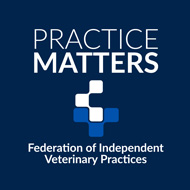Flatter saddles may improve horse welfare – study

“This study offers valuable insight, and the findings will support fitters to have more impactful conversations with clients about maintaining optimal saddle fit" - Catherine Morris, Worshipful Company of Saddlers.
Flatter saddles could improve the welfare of horses that spend much of their time in ridden motion, according to new research.
The study from the Royal Veterinary College (RVC) and the University of Southampton found that horse backs become much flatter during movement compared to when they are stationary. This suggests that traditional saddle fitting may not properly support weight distribution during riding.
It is hoped that the findings, published in the Journal of the Royal Society Interface, may help improve the design of saddles, as well as improve the health and welfare of horses.
Study lead Dr Jorn Cheney, lecturer in natural sciences at the University of Southampton, said: “I am reassured that a lot of key principles of saddlery held true.
“At least during walk and trot, saddles can be stiff, and they cover areas of the back that don’t move. Now the exciting question is, ‘do we improve upon the design by fitting to the moving animal?’ and if so what’s the best way of making that technique accessible?”
Back pain in ridden horses is often linked to poor saddle fit, but this can be reduced with a well-fitting saddle that evenly distributes the weight of the rider.
In the study, researchers used cameras to measure the saddle region of horses' backs while walking, trotting and standing – recording the differences in curvature. The team then verified these observations by building a life-sized, laser-scanned model horse.
They noted that, when a horse was moving, the saddle region remained relatively stable, with only a few millimetres of changes – suggesting that deformable padding found in the side panels of saddles could accommodate these variations.
Furthermore, the study highlights the importance of withers clearance and lays the groundwork for more studies into saddle fit, particularly during canter, gallop, and the impact of a rider's weight.
Catherine Morris, equestrian and charities advisor the Worshipful Company of Saddlers, commented: “This study offers valuable insight, and the findings will support fitters to have more impactful conversations with clients about maintaining optimal saddle fit.
“Understanding a horse's back in movement and how it changes with factors like gait, load, fitness, and training is critical for achieving effective and comfortable fit for horse and rider."
Image (C) Shutterstock.



 The Federation of Independent Veterinary Practices (FIVP) has announced that its podcast, FIVP Practice Matters, will be returning for a second series next year.
The Federation of Independent Veterinary Practices (FIVP) has announced that its podcast, FIVP Practice Matters, will be returning for a second series next year.